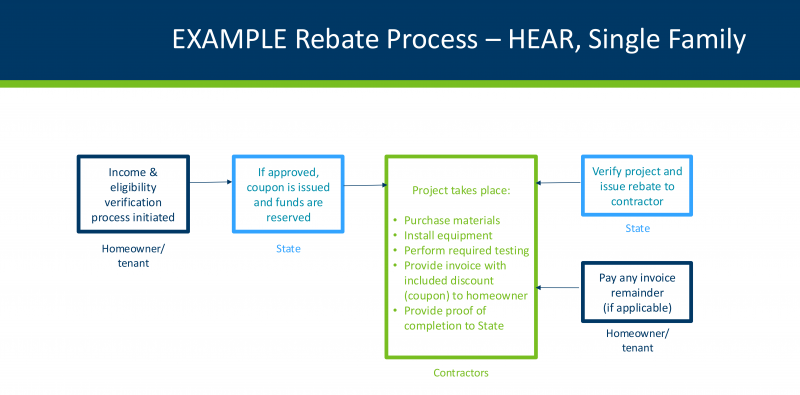
The Minnesota Department of Commerce conducted six public forums in July introducing the Minnesota Home Energy Rebate Program. The forum in Minneapolis on July 11 was at the Urban League, and was presented by Pete Wyckoff and Amy Scheller. The Minnesota rebate program is funded by the Inflation Reduction Act (IRA) that was passed in August 2022, as the largest investment in climate and energy in American history. The objectives of the IRA are to improve energy efficiency, saving household money on energy, ensure access to capital for low- and moderate-income households, reduce indoor and outdoor pollution, and scale access to and demand for energy efficiency upgrades.
The IRA has $8.8 billion specifically allocated to home energy rebate programs. The Minnesota Department of Commerce is the designee of funding from the U.S. Department of Energy (DOE). The Minnesota Home Energy Rebates program has two parts. The first is the Home Efficiency Rebates (HOMES) funded with $74,311,171 and the second Home Electrification and Appliance Rebates (HEAR) funded with $74,027,440.
The Home energy rebate programs must align with the Justice40 Initiatives which aims to insure 40% of the overall benefits of the relevant federal investments flow to disadvantaged communities. The program priorities are to reduce energy and environmental burdens on disadvantaged communities. The energy department also requires the state program’s 40% of the funds to be set aside for low-income households and 10% to low-income multi-family households. Minnesota submitted its HEAR application in March of this year and is currently setting up its HOMES program for submission.
An overview of the HEAR program point-of-sale rebate is for specific electrification and appliance upgrades in low to moderate income households and based on specific improvements. The allowable technologies are in heat pump technology for heating/cooling, cloths drying and water heating. Upgrades include more efficient electric stoves, cook tops and range/ovens. Electrical panels and wiring are also included along with weatherization, insulation, air sealing and ventilation. The rebates include a maximum amount of $14,000 along with higher amounts for low-income households up to 100% of the cost. Moderate income households may qualify for as much as 50% of the cost.
The HOME or Homes Efficiency Rebates are based on whole-house energy projects modeled and achieved. This program was based on focused energy savings not tied to specific improvements. The program is eligible for homeowners, renters, and both single and multi-family housing of all income levels. Allowable projects for these funds include a combination of energy-upgrades that improve the energy performance by required percentages such as insulation and air sealing. This program will also include heating, cooling and water heating products that include the Energy Star criteria. Minnesota Commerce can further set specifications of other products such as heat pumps. These will include modeled plans with predicted savings of 20% to 34%, and are measured upon completion of a minimum of 15%. The rebates could range between $2,000 and $8,000 per unit based on original estimates and final amount of energy savings per project.
The State of Minnesota received funds to implement the programs in the Fall of 2023. The accelerated HEAR application was submitted to the DOE in March of this year. The state will be implementing their plan in August with the program expected to launch in the spring of 2025. For more information regarding these programs visit mn.gov/commerce mn.gov/Commerce & search for: “home energy rebates.” Questions can be submitted to residential.rebates.comm@state.mn.us.


